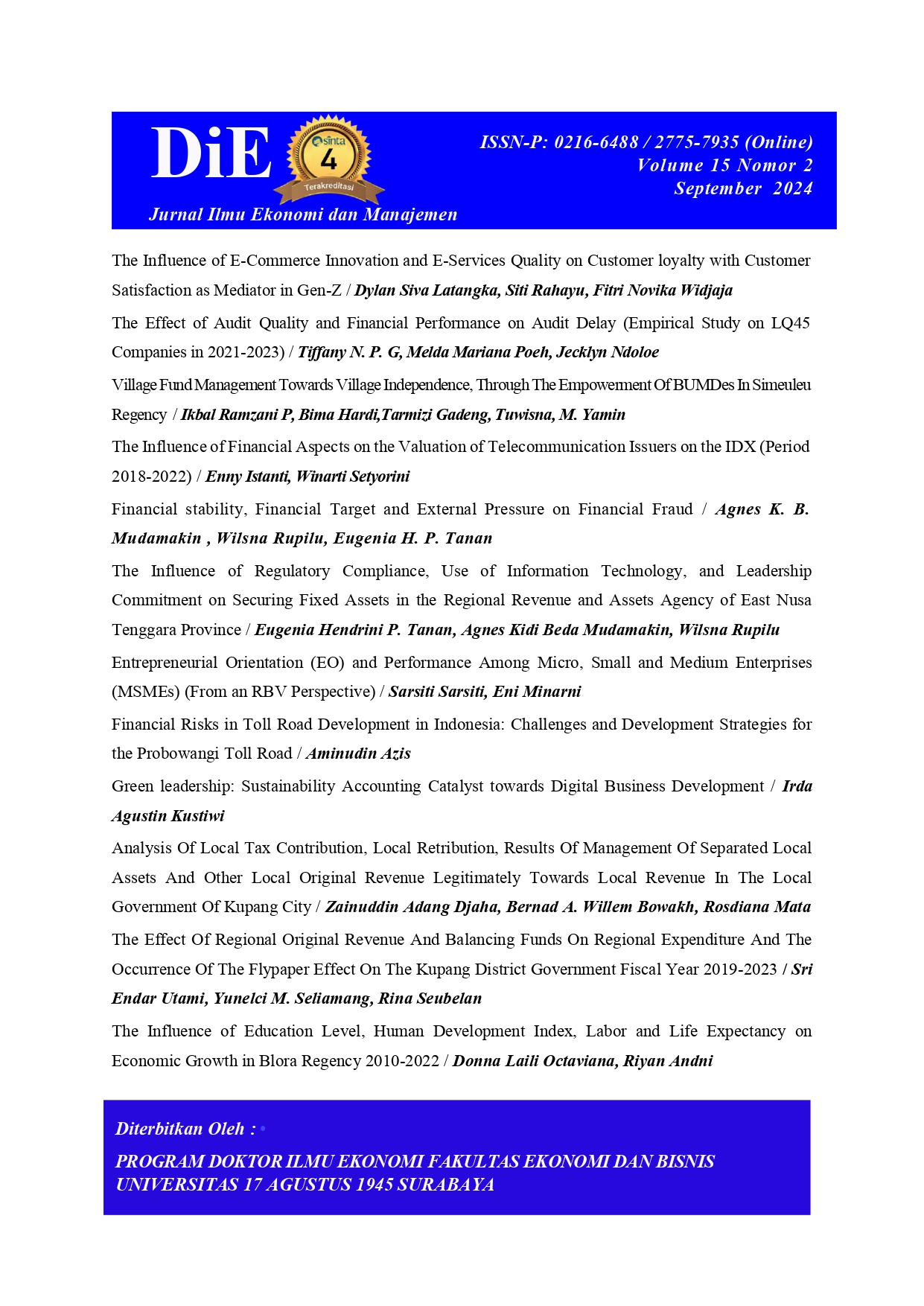Analysis Of Local Tax Contribution, Local Retribution, Results Of Management Of Separated Local Assets And Other Local Original Revenue Legitimately Towards Local Revenue In The Local Government Of Kupang City
Abstract
The implementation of Law No. 23 of 2014 concerning Regional Government and Law No. 33 of 2004 concerning Central and Regional Financial Balance has caused fundamental changes regarding the regulation of relations between the Center and Regions, especially in the field of government administration and in financial relations between the Central and Regional Governments, known as the era of regional autonomy. In the current era of regional autonomy, regions are given greater authority to regulate and manage their own households. The objectives include bringing government services closer to the community, making it easier for the community to monitor and control the use of funds sourced from the Regional Revenue and Expenditure Budget (APBD), in addition to creating.
The contribution of regional taxes to the regional income of Kupang City in 2020 was 8.59%, The contribution of regional taxes to the regional income of Kupang City in 2021 was 8.32%, The contribution of regional taxes to the regional income of Kupang City in 2022 was 10.38%. The contribution of levies to the regional income of Kupang City for 2020 was 3.33%, The contribution of levies to the regional income of Kupang City for 2021 was 3.38%, The contribution of levies to the regional income of Kupang City for 2022 was 5.56%
The results of the achievement of the percentage of regional independence when associated with the pattern of relations between the central government and regional governments in the implementation of regional autonomy, especially the implementation of Law Number 33 of 2004 which has been amended to Law Number 1 of 2022 concerning Financial Relations between the Central Government and Regional Governments, then the regional financial independence of Kupang City is in an instructive relationship pattern, where the role of the central government is more dominant in financing the development of Kupang City than the independence of the regional government so that it is considered that the regional government has not been able to implement regional autonomy
Downloads
References
Law Number 1 of 2022 Concerning Financial Relations between the Central Government and Regional Governments
Republic of Indonesia. 2014. Law Number 23 of 2014 concerning Regional Government
Mahmudi, 2017, Analysis of Regional Government Financial Reports: A Guide for Executives, DPRD and the Community in Economic, Social and Political Decision Making, YKPN School of Management, Yogyakarta
Hariadi Pramono; 2020; Regional Financial Management. Salemba Empat Publishing House, Jakarta
Abdul Halim. Regional Financial Accounting and Control, Regional Financial Management Anthology Series, UUP AMP YKPN, Yogyakarta, 2020
Arini S, PR 2019. The Effect of Capital Expenditure and Local Original Income on Private Investment in Indonesia with Economic Growth as an Intervening Variable. JRAMB, Accounting Study Program, Faculty of Economics, UMB Yogyakarta, 5(1), 28–38
Syaiful, 2016; Regional Financial Management. Salemba Empat Publishing House Jakarta
Nurmainah, 2019 The Influence of Capital Expenditure, Balancing Funds and Local Original Income on the Financial Performance of Districts and Cities in Aceh Province. Journal of Master of Accounting Postgraduate Program, Syiah Kuala University. 5(3): 30-38
RD, E. P., & Yasin, M. (2024). Sektor Industri Pengelompokan Dan Perusahaan Negara. MUQADDIMAH: Jurnal Ekonomi, Manajemen, Akuntansi dan Bisnis, 2(3), 28-36.
Wirastiti, M., Widhyasa, A. A., & Yasin, M. (2024). Analisis Struktur Kinerja dan Konsep Keunggulan Komparatif Industri. Inisiatif: Jurnal Ekonomi, Akuntansi dan Manajemen, 3(3), 63-71.
The author who will publish the manuscript at DiE: Jurnal Ilmu Ekonomi dan Manajemen, agree to the following terms:
1. Authors retain copyright and grant the journal right of first publication with the work simultaneously licensed under a Creative Commons Attribution ShareAlike License that allows others to share the work with an acknowledgment of the work's authorship and initial publication in this journal.
2. Authors are able to enter into separate, additional contractual arrangements for the non-exclusive distribution of the journal's published version of the work (e.g., post it to an institutional repository or publish it in a book), with an acknowledgment of its initial publication in this journal.
3. Authors are permitted and encouraged to post their work online (e.g., in institutional repositories, pre-prints sites or on their website) prior to and during the submission process, as it can lead to productive exchanges, as well as earlier and greater dissemination of published work




